Do you know what a candy bar you always buy when exiting a store, a pile of clothes in your closet you’ve bought, but never worn, and a pair of shoes you wouldn’t even try on have in common?
They are all a display of your consumer behavior.
Analyzing what and how people buy (or don’t buy) has become an essential part of every successful business. It enables businesses to get to know their customers all the way and make their shopping experience tailored to their specific needs.
Why is personalization important?
Well, 97% of marketers witnessed a rise in business outcomes as a result of personalization. And you too probably like to get special treatment from a webshop you’ve bought at before, rather than being swamped by a ton of generic emails.
In this blog, we’ll go through the definition of consumer behavior, take a look at various factors that influence it, and head on to consumer behavior analysis and the exact steps and tools you need to use to conduct it.
Let’s dig in!
What is Consumer Behavior?
Consumer behavior studies all factors influencing a person’s buying habits. This means that it encompasses everything from their personal, social and psychological features to background factors such as market trends and product availability which influence their behavior.
In other words, it’s tracking which processes make people buy stuff and how they feel along the way.
Let’s say you’re buying a new pair of shoes. A person studying your consumer behavior will start from your general shopping habits. For example, if you prefer shopping online or in stores. Which brands do you prefer? How often do you buy shoes? Is there a specific model you’re keen on more, depending on the season?
The more details you can find out, the clearer the image of your consumer. And, ultimately, the easier to create certain patterns and consumer groups. Finding out consumer behavior patterns in a haystack of data like this opens the doors to successful marketing campaigns and ultimately bigger revenue.
Read Relevant Content: Consumers vs. Marketers

Why is analyzing consumer behavior important
Apart from providing unique opportunities to improve and boost your marketing campaigns, analyzing consumer behavior is vital for several reasons.
- Predicting trends – observing consumer behavior will enable you to notice a change in trends. In this way, you can make sure to jump on the bandwagon of trends and offer something exciting to your customers.
- Customer differentiation – while doing consumer behavior analysis, it’s easy to notice patterns and segment your customers into groups of consumers that behave similarly. This enables you to create different marketing campaigns and effectively target these groups.
- Understanding competition – studying your customer behavior may answer if they buy from your competition. If the answer is yes, you can find out why, and which gaps you have in your offer that make them go to your competition.
- Customer retention – analyzing consumer behavior will reveal what your customers like about you. With this information, you can find out quickly what makes your customers happy and invest even more effort into keeping your customers satisfied.
- Customer service improvements – different customer groups require different assistance. Having an overview of different customer segments and their features will help you think of the best customer service that would fit their individual needs.
What Influences Consumer Behavior
As mentioned, there is a number of factors influencing consumer behavior. Let’s go through 4 main groups.
Personal factors
Personal factors include mainly demographic features, such as gender, age, occupation, income, personality traits, etc. When researching these factors, experts focus on a person’s lifestyle, hobbies, how they spend their free time, and daily routine.
For example, research shows that Gen Z, Millennials, and Gen X like shopping through social media and a company’s mobile app much more than Boomers. So if your business is targeting mainly Millennials, you would probably want to step up your social media game. Or focus your company efforts to improve your mobile application.
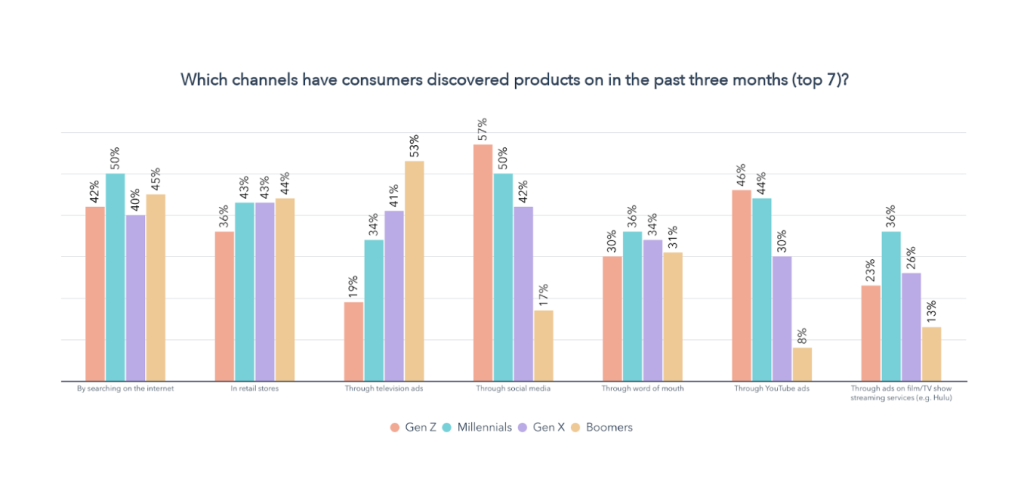
Psychological factors
Psychological factors are the hardest to predict since they depend on a person’s current mood, attitude, and perception. They refer to specific behavior patterns a person has depending on their knowledge, experience, and understanding of the situation.
If, for example, you are trying to sell something to a person who has just lost a job, they might be less keen on considering your offer than somebody who has just got a raise or a promotion.
It is important to keep in mind that this attitude is changeable. It doesn’t stand for who these customers really are.
Read 6 Ways To Improve Customer Sentiment For Your Brand
Social factors
Social factors include a person’s social class, religious beliefs, specific customs, ethnic background, and everybody this person is surrounded with. This refers to their friends, family, colleagues, and any social networks that they are a part of.
According to some marketers, family plays a crucial role in shaping consumer behavior since you unconsciously take up certain buying behaviors you watch when you grow up.
Situational factors
These include all physical factors that might influence a shopping decision. They may vary from the store’s location, setup and lighting to social trends, global economic conditions, inflation, pandemic, etc.
The best example of how situational factors influence customer behavior comes from the recent COVID pandemic. Research shows that 27% of people have increased their online shopping since the pandemic started. This valuable insight may encourage businesses to invest more in the quality of their websites and webshops.
What is Consumer Behavior Analysis
Consumer behavior analysis examines how customers engage and interact with your company. It starts by segmenting your customers into groups with similar behavior. After that, it moves forward by mapping their respective customer journeys and it draws conclusions on how, what and when they buy.
This analysis brings a multitude of benefits to your company. While learning how exactly your customers interact with your company, it is easy to find out more about their decision-making process, their motives, and priorities during the process. In addition, you can find out more about your brand image. And check if how you’re doing and how you thought you were doing are aligned.
Read Sentiment Tracking: How to Get Inside Your Customers’ Minds?
Why should you conduct a consumer behavior analysis
Satisfying your customers’ expectations has become an increasingly challenging task. The competition has never been harsher, alternatives never more available. So it’s no wonder that consumer expectations keep rising every day. In fact, a recent study by Salesforce showed that 66% of customers expect companies to understand their needs and expectations. So digging deep into what makes your customers happy helps you identify problems, opens new opportunities, and improves the overall customer experience.
Apart from that, consumer behavior analysis enables:
- Personalization. A whopping 71% of consumers feel frustrated when their shopping experience is impersonal. Let’s say that again – 71%.
- Increased customer lifetime value (LTV). Customer lifetime value is your total revenue from a certain customer relationship. Knowing your customers will make it easier for you to prolong the LTV and recognize opportunities for upselling.
- More optimized content. Conducting a thorough customer behavior analysis will reveal what type of content your customers like the most. In this way, you can direct your marketing efforts in producing more of this type of content and the content your prospects are most likely to search for.
- Higher customer retention. Learning and anticipating your customers’ needs is a great way to increase customer retention. Based on research, acquiring a new customer can be five times more expensive than retaining the existing one.
How to Do Consumer Behavior Analysis
There are several steps to every consumer behavior analysis. The first step is always to define your goals, who your consumers are, and their key motivators. You proceed then with creating a customer journey map and then move on with gathering and analyzing data.
Let’s take a closer look at all of these processes.
Define your goals
Every great analysis starts with one pretty straightforward task – setting your goals. So the first question you should ask yourself is what you want to achieve with this analysis. Is there a piece of specific information that you’re hoping to find? Or is there a particular behavior you’d like to understand?
When you’re done setting goals, it’s time to choose the KPIs which will be an indicator of your success.
So, for example, if you’re looking to personalize the customer journey further, you should definitely track:
- Customer lifetime value
- Conversion rate
- Sentiment analysis
Read How to Conduct Sentiment Analysis to Improve Customer Experience
Segment your consumer base
There are several ways you can segment your consumer base. The most basic one is to segment them by their demographic characteristics (gender, age, generation, etc.), geographical features (town, country, area. etc.), or psychographic ones (values, personality traits, etc.).
You can go a step further based on your needs and segment them by their buyer’s journey, product usage, preferred channels, motivations behind the purchase, timing, etc.
The first place to search for this info is your website analytics. Next – you can use surveys and focus groups as a more traditional means of research. Or you can implement a social listening tool. It will reveal unbiased information on your brand and customers from online resources like forums and social media.
Whichever method you choose, keep in mind that the primary goal of this process is to understand the differences between the groups and their respective pain points. This will help you further personalize their customer journeys and improve their experience.
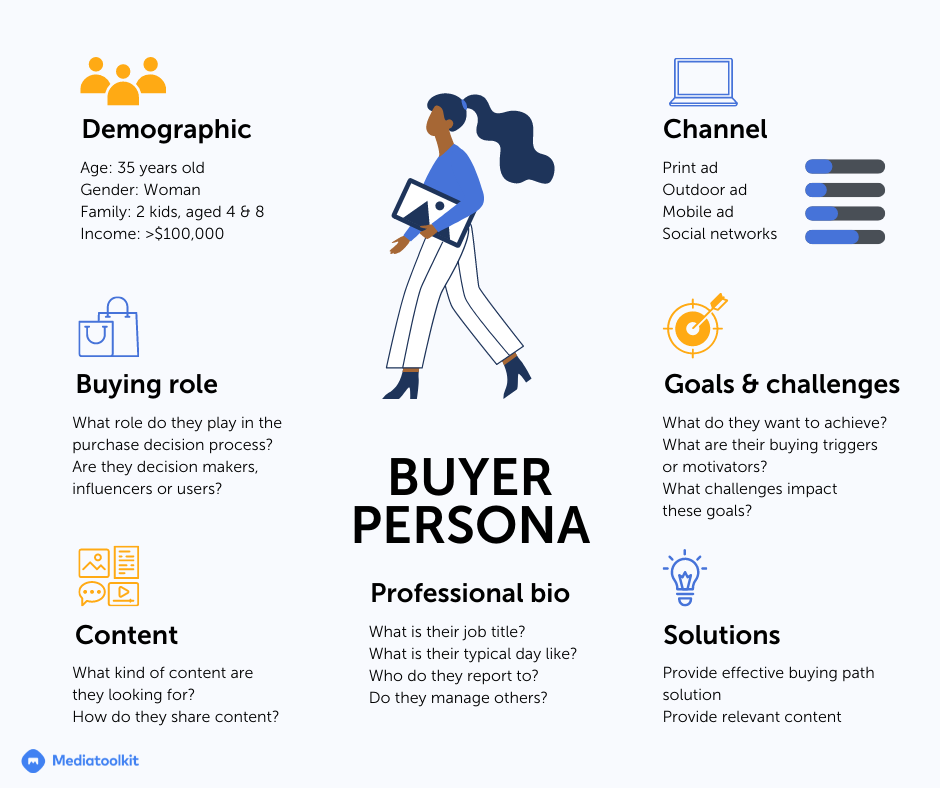
Identify key benefits for each group
Each person will have their respective reason for becoming your customer and buying from you. And finding out more about their why is a must. At this point, it’s time to focus on external factors influencing the buying decision.
For example, did they buy from you because they got a recommendation, or are they your loyal customer? Why did they choose to buy at that specific moment? How much they spent and why? Were they in a rush or not?
The more information you can get about the context, the better. This will help you understand their why and adjust your strategic processes accordingly.
You can’t get this info without speaking to your customers directly. So to find out this information, you’ll need to use surveys (in the shops or online), follow-up emails, or, again, one of the social listening tools that will provide insights into conversations about your brand. This may not give you straightforward answers to your particular questions, but you may understand the general sentiment and problems your customers had along the way.
Read How Social Media Listening Can Increase Customer Advocacy
Gather data
First things first – consider all customer touch points as potential sources of valuable consumer behavior data. When you think of it, there is a goldmine of valuable data right at your fingertips. From the first contact they make to their payment and customer service questions. In this process, it is essential to include both external and internal sources of information.
Internal would, in this case, refer to those data you can extract from your company tools (like website analytics data, subscriptions, social media insights, product usage reviews, etc). External sources include review pages, forums, third-party data like industry trends, competitor analysis, etc. A good overview of both will enable you to draw objective conclusions and make your research more plausible.

Introduce changes if necessary
After gathering all this data, you will probably find areas that can be improved immediately. So you might just as well do them then.
For example, you may discover that many of your most loyal customers belong to Gen X and come mainly from Instagram. You can use this information to start an additional campaign on Instagram aimed at Gen X and your best selling point. Or you can work additionally on the website segments this group mainly lands on. The possibilities are endless.
Analyze your data – always.
Every excellent research ends with a thorough analysis of the results. Consumer behavior analysis is an ongoing process – it’s not something you do once and then never return to. Just as customer habits and the market are changing, so should your business. And the best driver of this change is precisely the data you get by analyzing your customers’ purchasing habits.
In the end, make sure you have answers to these questions:
- How do people most frequently find out about your product/service
- What’s the most frequent purchase path
- Which products/services drive the most conversions
- Which benefits do your consumers highlight the most
- What impacts customer retention
- Where does the customer churn happen, and why
Make sure to highlight areas for improvement and points of friction and go back to these after every analysis.
Consumer Behavior Modeling
Whereas consumer behavior analysis encompasses a wider picture around the buying proces, consumer behavior modeling is focused on the second step – specific buyer groups. It refers to a theoretical approach to why and how groups of consumers make their purchasing decisions.
The ultimate goal? Being able to predict how people from the same consumer group will react in similar conditions.
It is usually carried out by assigning points for 3 factors:
- (R)ecency – the freshness of customer activities
- (F)requency – how often customer transactions happen
- (M)onetary value – transactions value
By using this RFM scoring system, you can easily determine which customers spend the most, which are the most loyal and which ones are likely to churn.
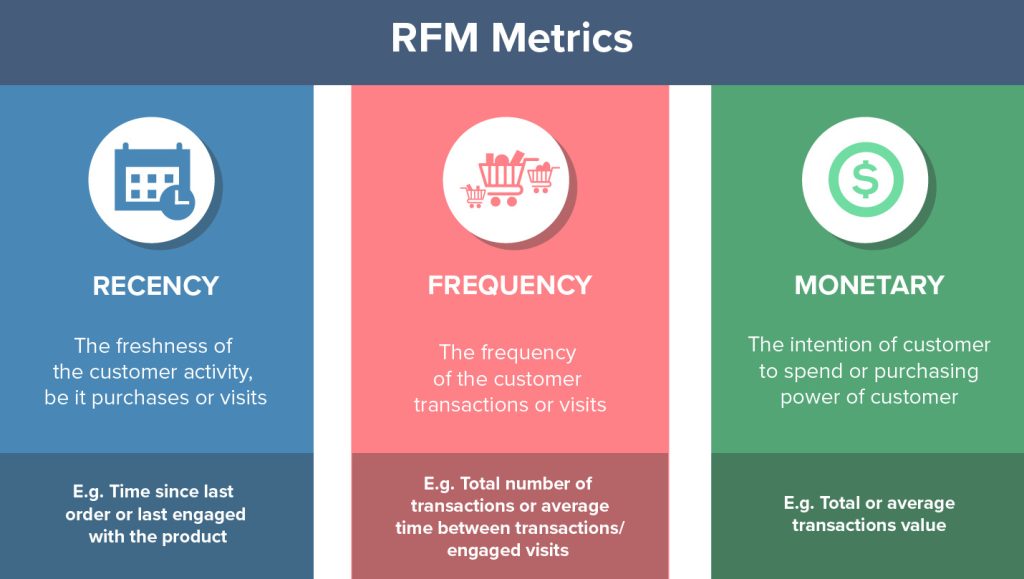
Tools to Use for Consumer Behavior Analysis
When conducting a consumer behavior analysis, there are several tools that you can use which will make gathering data much more accessible. Here are some of them.
Google Trends
Google Trends is a tool used to observe the popularity of specific search terms on Google. This is extremely useful since it gives you information about seasonal trends of products, services, or your particular niche. What is more, you can compare topics to see which is more popular or keep an eye on instant spikes or shifts. As a result you can plan your promotions and strategies more informed.
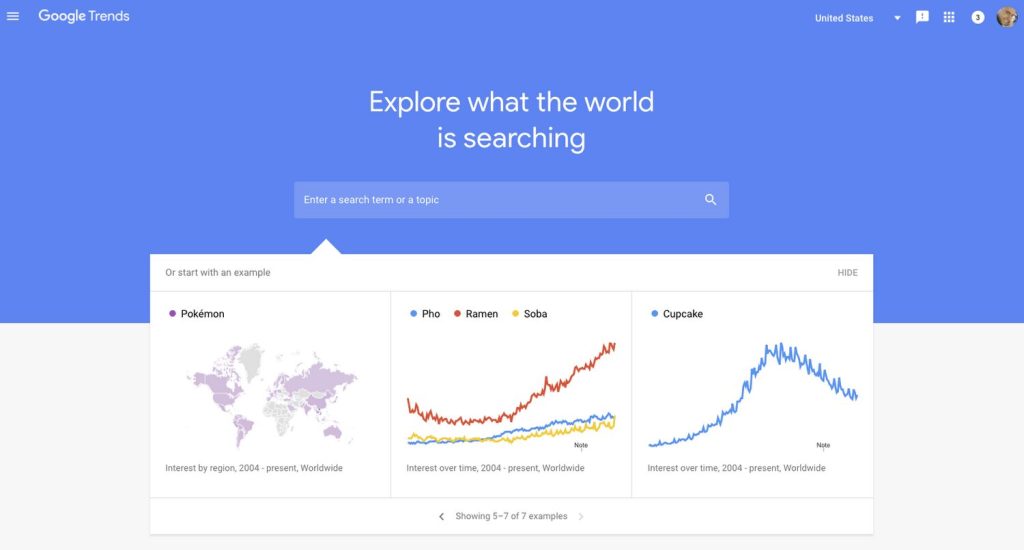
Hotjar
Hotjar allows you to see how your users interact with your website. In other words, it registers clicks, engagements, session duration or complete sessions. Finally, it provides heatmaps that help you detect easily how your customers use your website and which problems they encounter.
For example, you can discover if your website is user-firendly enough, if the navigation is intuitive and how it affects your conversion rate. Ultimately, you can make changes to optimize it and track any changes.
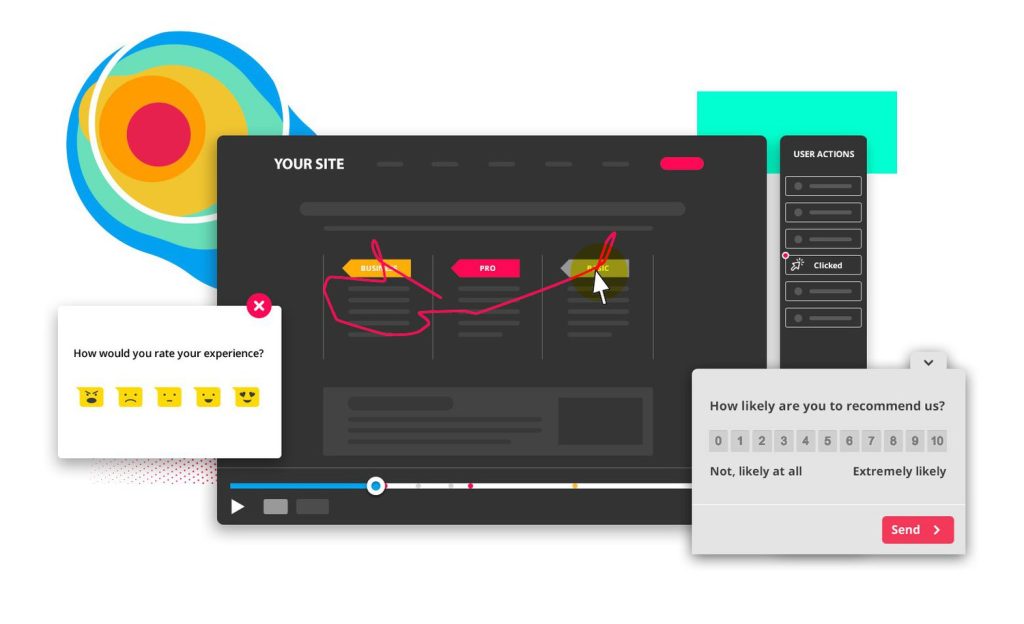
Determ
Determ is a media monitoring and social listening software which enables you to track specific mentions in over 100 million online sources. By tracking your brand name you can find out what people are saying about you on websites, social media (whether you’re tagged or not), different forums, etc. and get a clear image of what they like and dislike about your brand, specific campaign, product or image.
In addition, you can get all this information about your competition too, so you can use it to learn about their success and pain points and use it when creating your future strategies.
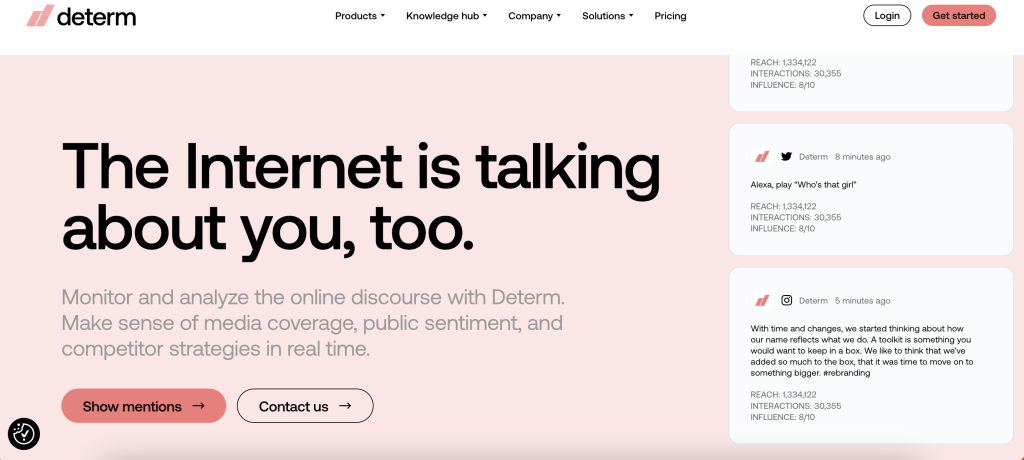
Social Media Analytics
All social media platforms provide a range of extremely useful analytics. They contain demographic information about your followers, how and to what extent they interact with your page, as well as what they think of your content. They are also an extremely valuable source of customer feedback, since social became customers’ preferred way of reaching out to a brand’s customer support.
So if your target customers use social media, these analytics should be one of the key parts of your consumer behavior analysis.
In the End
Imagine you’re preparing a dinner for a group of people you’ve never met before. You’d probably want to find out what kind of cuisine they like, if they have allergies, if they’re vegetarian or vegan and what they’d prefer to drink with the meal. You’d want your dinner to be a success, wouldn’t you? Researching consumer behavior for your business is somewhat similar. Knowing as much as you can about your customers enables you to create personalized customer experiences which are a great step towards making your customers really happy.
It all comes down to the first rule of marketing – know thy customer. They pay for your products and services, they keep your business going and ultimately, their opinion is what matters the most.



